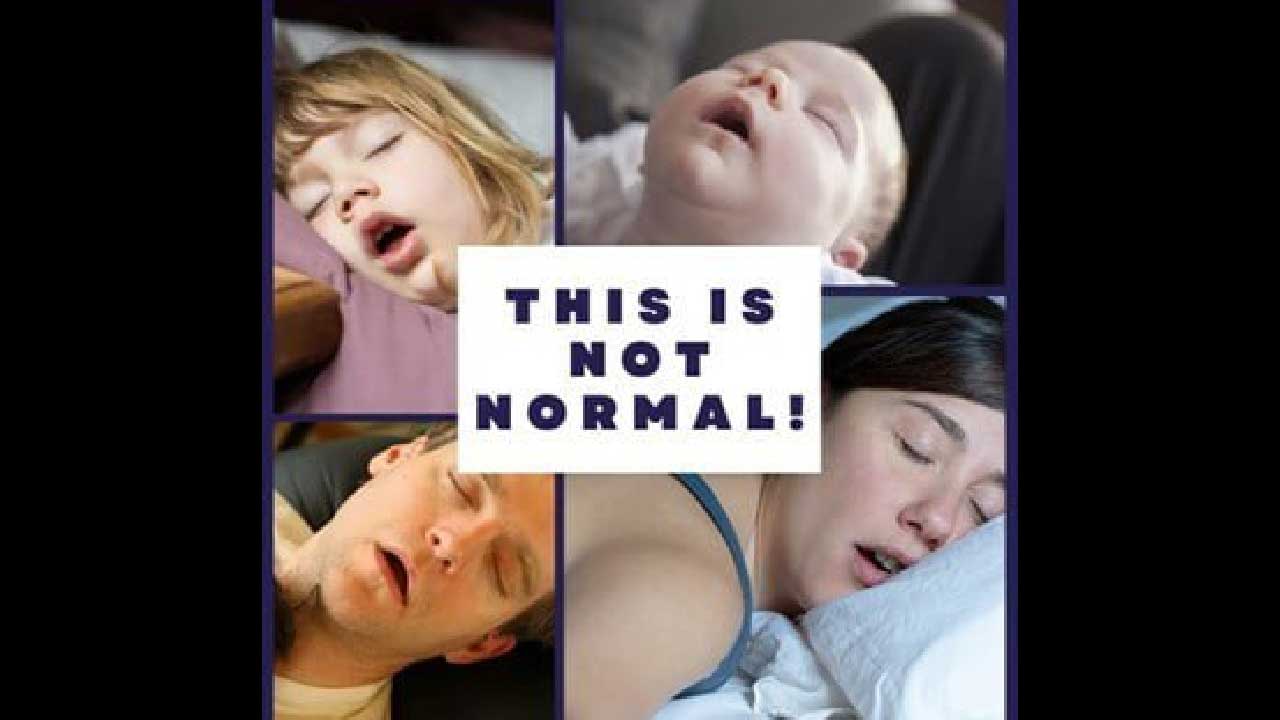- Charcha Patra
- Warning for Parents: Mouth Breathing Isn’t Harmless!
Warning for Parents: Mouth Breathing Isn’t Harmless!

While occasional mouth breathing might seem harmless, chronic mouth breathing in children can lead to a cascade of developmental issues. From facial alterations to cognitive impairments, understanding of it is crucial for early intervention.Let's take it one by one.
1. Face and teeth issues
Nasal breathing plays a pivotal role in shaping the facial structure during a child’s growth. Chronic mouth breathing can lead to:
• Narrowed facial structure and elongated face: Mouth breathing can cause the upper jaw to narrow and the face to elongate, leading to aesthetic and functional issues.
• Receding chin and misaligned teeth: The altered tongue posture associated with mouth breathing can result in a receding chin and crowded teeth, necessitating orthodontic interventions.

2. Sleep and Behavioral Issues
Mouth breathing can compromise sleep quality, leading to:
• Snoring and sleep apnea: These conditions reduce oxygen intake during sleep, affecting overall health.
• Daytime fatigue and concentration difficulties: Poor sleep can result in tiredness, impacting a child’s ability to focus and learn.
• Hyperactivity and behavioral challenges: Sleep disturbances from mouth breathing can mimic or exacerbate symptoms of ADHD.
3. Cognitive Impacts
Chronic mouth breathing has been linked to cognitive deficits, including:
• Reduced working memory and learning difficulties: Children with mouth breathing syndrome may exhibit deficits in working memory, reading comprehension, and arithmetic skills.
• Altered brain function: Functional brain imaging studies have shown that oral breathing can lead to decreased brain activity in areas responsible for memory and learning.

4. Speech and Swallowing Challenges
Mouth breathing can interfere with normal speech and swallowing patterns:
• Speech delays and articulation issues: Children who mouth-breathe may develop a lisp or struggle with articulation.
• Swallowing difficulties: The altered tongue posture can affect swallowing, leading to inefficient feeding and potential nutritional concerns.
5. Immune System and Respiratory Health
Nasal breathing acts as a natural filter, trapping dust, allergens, and pathogens before they enter the body. Without this protective function, mouth-breathing children are more susceptible to:
• Frequent colds and respiratory infections: Mouth breathing bypasses the nasal filtration system, increasing the risk of respiratory infections.
• Allergies and asthma exacerbations: The unfiltered air can introduce allergens directly into the lungs, triggering or worsening allergic reactions and asthma.

What to do: Steps for Parents and Caregivers
Early recognition and intervention are key to mitigating the adverse effects of mouth breathing:
• Consult Healthcare Professionals: If you notice signs of chronic mouth breathing in your child, seek advice from pediatricians, ENT specialists, or orthodontists.
• Address Underlying Causes: Conditions like allergies, enlarged tonsils, or nasal obstructions should be evaluated and treated appropriately.
• Encourage Nasal Breathing: Simple breathing exercises and reminders can help children develop the habit of nasal breathing.
• Consider Myofunctional Therapy: This therapy focuses on strengthening the oral and facial muscles to promote proper breathing, chewing, and swallowing patterns.
About The Author

Dr. Rachana Dave Bhatt is a leading Cosmetic and Aesthetic Dentist based in Surat, with over 16 years of clinical experience. Founder of R.R. Dental n' Maxillofacial Clinic, she specializes in smile design, restorative dentistry, and dental makeovers. With a passion for creating confident smiles, Dr. Bhatt combines artistic precision with modern dental techniques to deliver personalized, high-quality care.




-copy3.jpg)







-copy2.jpg)



-copy30.webp)


-copy3.jpg)


